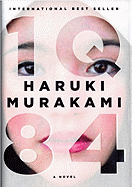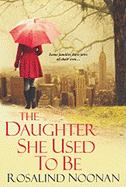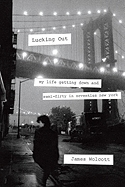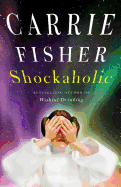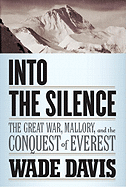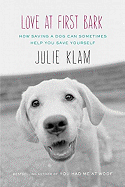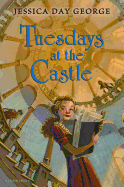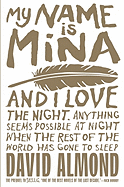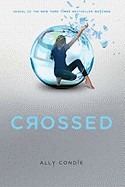A Journey with Murakami
A growing number of American readers are discovering the unusual world of Haruki Murakami, best known for The Wind-Up Bird Chronicle. His new book, 1Q84 (see our review below), came out last week, and was so eagerly anticipated that many bookstores opened at midnight so readers could get copies as soon as they were available.
I discovered Murakami when I first became a Raymond Carver fan and learned that a Japanese writer--Murakami--had just translated for the first time all of Carver into Japanese and that the Japanese were going crazy for it. So I read some of his stories, and they were weird--but they were also lovely and believable and incredibly well written. Then I read The Wind-up Bird Chronicle, and I swear I dreamt it the whole time I was reading it. Suddenly I was living in Murakami's world, complete with people who disappear down holes.
He's like all the cool authors from when I was a teenager rolled into one: Vonnegut, Brautigan, Fitzgerald, Salinger, Irving and, of course, Carver. Almost everything you read by him is simply "boy meets girl...." And yet there's something about his writing that sucks you into his world, where you live during his usually very long books, and then you come out, back into your own world. And what's funny is that, in some way, Murakami's world is so strange and murky and beautiful that it's almost a relief to get out of it and back to the boring thick of you life. Still, it's not harsh going from one world to another: he has this incredible gift for writing that seeps into your mind and subtly changes the way you see some things.
He's an author who has a power with words, their cadence, the story, the imagination. When you read him, you ache to be that talented. That's Murakami. --Jenn Risko



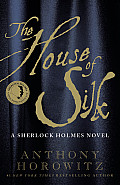 The House of Silk: A Sherlock Holmes Novel is by Anthony Horowitz, a British novelist and screenwriter whose own bestselling thrillers and adaptations of mystery novels (including many of Agatha Christie's Poirot series) have no doubt given him a lot of clues (yes, that pun is very much intended) about how to concoct a Holmesian tale for a previously Holmes-free millennium.
The House of Silk: A Sherlock Holmes Novel is by Anthony Horowitz, a British novelist and screenwriter whose own bestselling thrillers and adaptations of mystery novels (including many of Agatha Christie's Poirot series) have no doubt given him a lot of clues (yes, that pun is very much intended) about how to concoct a Holmesian tale for a previously Holmes-free millennium.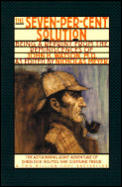 The Seven-Percent Solution by Nicholas Meyer was a 1970s attempt not simply to pick up Dr. Watson's pen where Conan Doyle left off, but to fill in a few gaps in the Holmesian chronology, especially that "Great Hiatus" Holmes fans deem the years 1891-1894. Meyer also "uncovered" a collaboration between Holmes and Sigmund Freud, and gives readers a sense of the real bond between Sherlock and his well-connected brother, Mycroft.
The Seven-Percent Solution by Nicholas Meyer was a 1970s attempt not simply to pick up Dr. Watson's pen where Conan Doyle left off, but to fill in a few gaps in the Holmesian chronology, especially that "Great Hiatus" Holmes fans deem the years 1891-1894. Meyer also "uncovered" a collaboration between Holmes and Sigmund Freud, and gives readers a sense of the real bond between Sherlock and his well-connected brother, Mycroft.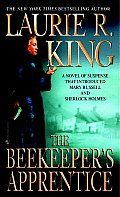 Many mystery readers were captivated by The Beekeeper's Apprentice, Laurie R. King's 1994 series launch in which a studious young Englishwoman named Mary Russell stole the aging Sherlock Holmes's heart--but, being just 15 years old, could not immediately marry him. The tale of this unlikely couple's courtship and their subsequent Great War and Roaring Twenties adventures has given a heretofore unimagined Holmes considerable life--and romantic heat.
Many mystery readers were captivated by The Beekeeper's Apprentice, Laurie R. King's 1994 series launch in which a studious young Englishwoman named Mary Russell stole the aging Sherlock Holmes's heart--but, being just 15 years old, could not immediately marry him. The tale of this unlikely couple's courtship and their subsequent Great War and Roaring Twenties adventures has given a heretofore unimagined Holmes considerable life--and romantic heat.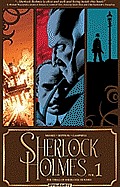 Sherlock Holmes, Vol. 1: The Trial of Sherlock Holmes by Leah Moore, John Reppion and Aaron Campbell is a graphic novel that uses the historic Holmes and Watson in a fresh story. Combined with this book's beautiful production (from fine paper stock to John Cassaday cover art), the excellent art and editorial mean that this team of authors has something fun and different on their hands. Will there be another one soon?
Sherlock Holmes, Vol. 1: The Trial of Sherlock Holmes by Leah Moore, John Reppion and Aaron Campbell is a graphic novel that uses the historic Holmes and Watson in a fresh story. Combined with this book's beautiful production (from fine paper stock to John Cassaday cover art), the excellent art and editorial mean that this team of authors has something fun and different on their hands. Will there be another one soon?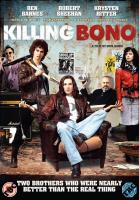 Killing Bono, based on the memoir by Neil McCormick, opens today. Ben Barnes and Robert Sheehan star as Irish brothers and aspiring rock stars who watch former school friends become U2. Includes the late Pete Postlethwaite's final performance.
Killing Bono, based on the memoir by Neil McCormick, opens today. Ben Barnes and Robert Sheehan star as Irish brothers and aspiring rock stars who watch former school friends become U2. Includes the late Pete Postlethwaite's final performance.